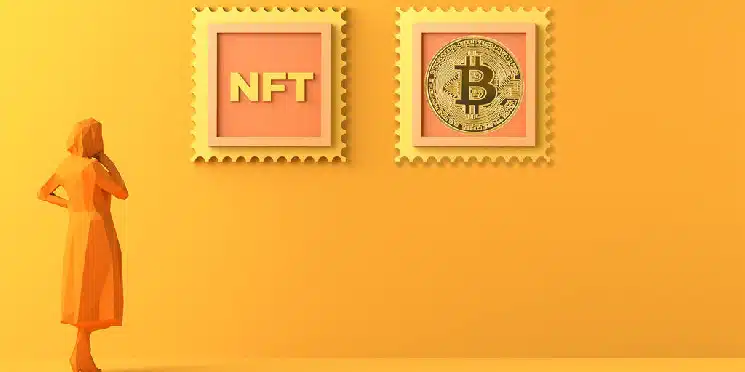Title: The Rise of ‘Bitcoin Stamps’ NFTs: A Threat to Traditional Stamps?
Introduction:
Non-fungible tokens (NFTs) have taken the world by storm in recent months, spurring a new wave of digital art and collectible items. As NFTs continue to gain more traction and popularity, they have begun to challenge traditional collectible items, such as stamps. One of the most significant developments in the world of NFTs is ‘Bitcoin Stamps.’ These digital stamps have garnered considerable attention and are increasingly considered a rival to traditional postal services’ stamps. This article examines the rise of ‘Bitcoin Stamps’ NFTs and how they are a growing threat to ordinaries or traditional stamps.
What are ‘Bitcoin Stamps’ NFTs?
‘Bitcoin Stamps’ are a type of NFT, which stands for non-fungible tokens. NFTs use blockchain technology and cryptocurrencies like Ethereum to tokenize digital art or other unique virtual items, making them one-of-a-kind and easily tradable. These digital assets can represent anything from digital paintings to music files to virtual real estate, each with its unique identifier on the blockchain.
The ‘Bitcoin Stamps’ NFTs specifically focus on the virtual replication of physical postage stamps. The creators of these digital stamps have taken inspiration from historic stamps and their designs, adding unique features that are only possible in the digital realm. Collectors can now buy, trade, and showcase these digital stamps as they would with traditional stamps, but without the physical limitations.
The Appeal of Bitcoin Stamps NFTs
Several factors contribute to the rising appeal of Bitcoin Stamps NFTs:
1. Unique Characteristics: Bitcoin Stamps NFTs have unique properties that are not possible with traditional stamps. They often include vibrant colors, animations, or interactions only possible through digital means. Additionally, the scarcity of specific designs adds to their collectability and value.
2. Security: Since Bitcoin Stamps NFTs are registered on a blockchain, their ownership and chain of custody are easily verifiable, negating the risk of counterfeit items or fraud. This is highly important to collectors who want to ensure that they are purchasing genuine collectibles.
3. Digital Advancements: The rise of Bitcoin Stamps NFTs also reflects broader digital shifts, as people become more comfortable with virtual items and experiences in many aspects of their lives, from gaming to investing. Virtual stamps may appeal to a younger, digitally-native audience that may not have previously engaged in stamp collecting.
4. Investment Opportunity: As with other digital assets and cryptocurrencies, Bitcoin Stamps NFTs are sometimes seen as an investment. The value of rare or in-demand NFTs can potentially increase significantly over time, leading some collectors to speculate on their long-term financial potential.
How ‘Bitcoin Stamps’ NFTs Are Disrupting The Traditional Stamp Market
Bitcoin Stamps NFTs are beginning to attract the attention of collectors and traditional stamp enthusiasts and are reshaping how people approach and perceive stamp collecting. Here are some key ways in which this new phenomenon is disrupting the market:
1. Democratizing Access: Traditional stamps can sometimes be challenging to find or purchase, often involving extensive research, visits to stamp dealers or auction houses, and large sums of money. Bitcoin Stamps NFTs can be bought and sold digitally, opening the door to a worldwide audience and potentially making collectible stamps more accessible to a broader range of collectors.
2. Reaching New Audiences: Digital stamps are likely to appeal to a younger, more digitally-savvy audience that may not have previously been interested in stamp collecting. This shift could help revitalize the hobby and bring a new generation of collectors into the fold.
3. Evolving Business Models: As the popularity of Bitcoin Stamps NFTs grows, it is possible that traditional postal services will begin to take notice and explore ways to incorporate NFT technology into their business models. This could lead to future collaborations or even competition between traditional stamp issuers and digital stamp creators.
Conclusion
It’s essential to recognize that the rise of Bitcoin Stamps NFTs doesn’t necessarily mean the demise of traditional stamps. The two can coexist, and many collectors may choose to participate in both markets. However, the emergence of digital stamps is undoubtedly changing the landscape of stamp collecting and challenging traditional norms.
As we continue to see advancements in technology and the widespread adoption of digital assets, it is critical for both the traditional stamp market and investors to keep an eye on the developments in the NFT space. The rise of Bitcoin Stamps NFTs presents both challenges and opportunities for the world of stamps, and it is up to collectors, enthusiasts, and industry professionals to navigate this new landscape and embrace change.


